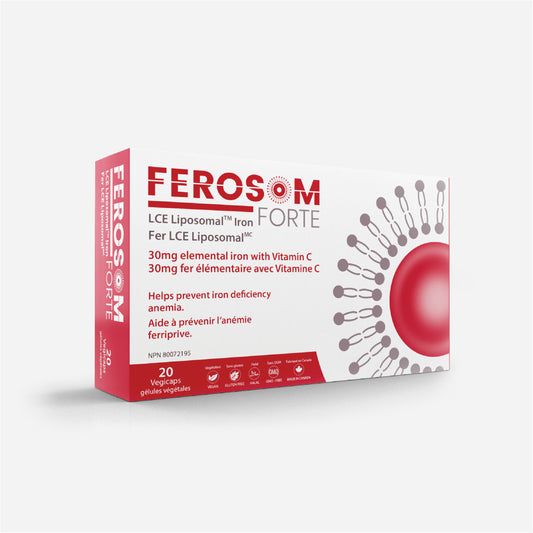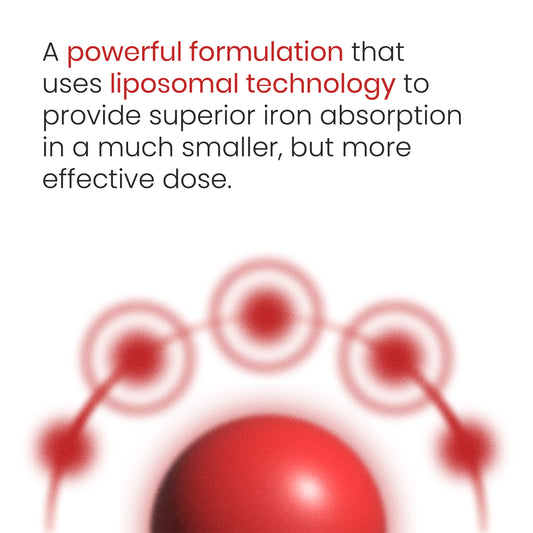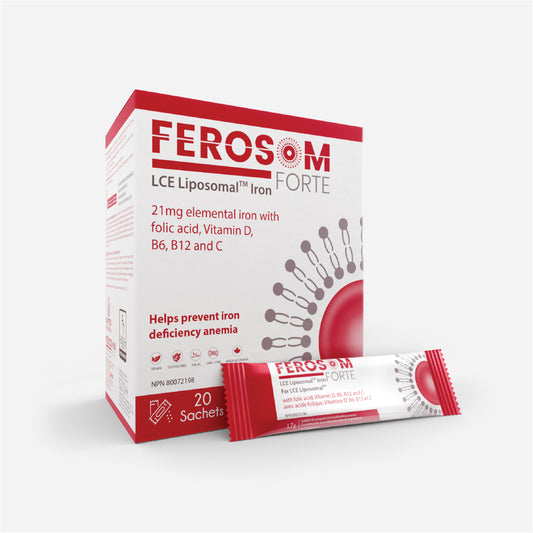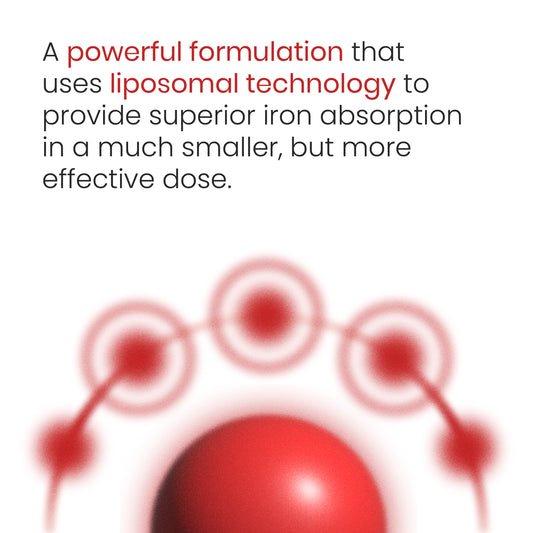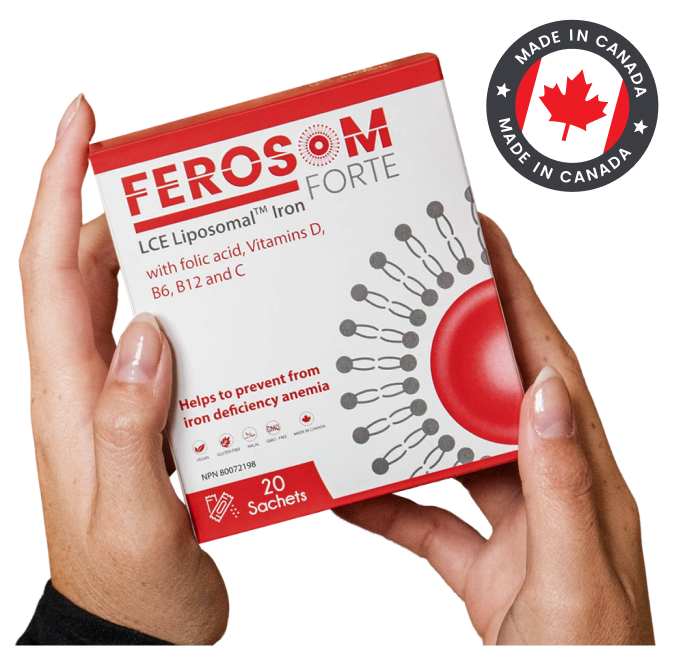Iron is important at any age. It supports energy, focus, immune function, gastrointestinal health, and more. For kids, getting enough iron is crucial for their bodies to grow healthy and strong. Still, about 7% of American children ages 1 to 5 are iron deficient or anemic.
How can you spot iron deficiency anemia in children and boost their iron levels safely? Everything you need to know is below.
Why is iron important for children?
Iron is an essential nutrient for a child’s growth and development. It produces hemoglobin—a protein that helps carry oxygen from the lungs to the rest of the body. Muscle, brain, and cardiovascular development all depend on oxygen being transported and stored effectively.
Low levels of iron in children can stunt their growth and potentially lead to iron deficiency anemia.
What causes iron deficiency anemia in children?
Iron deficiency anemia is the most severe form of iron deficiency. It’s characterized by a lack of healthy red blood cells, impacting all sorts of functions in the body.
What causes iron deficiency anemia in children? A number of factors could be at play:
- A low-iron diet
- Body changes that use up more iron, like growth spurts
- Gastrointestinal (GI) problems that impact iron absorption
- Blood loss through the GI tract, menstruation, or injuries
- Obesity or weight gain
- Being born prematurely or with a low birth weight
- Exposure to lead
- Drinking cow’s milk or goat’s milk in excess
Discovering the cause of your child’s iron deficiency is a great way to improve their iron levels over time.
What are the symptoms of iron deficiency anemia in children?
The tough part about low iron is that the symptoms aren’t always obvious. For most kids, symptoms don’t show up until they’ve already developed iron deficiency anemia. Not to mention your child might not be able to communicate their symptoms, depending on their age.
Symptoms of iron deficiency anemia can include:
- Pale skin
- Fatigue or weakness
- Cold hands and feet
- Irritability or behavioural problems
- Fast heartbeat or breathing
- Poor appetite
- Stunted growth or development
- Frequent infections
- Unusual cravings for non-food items, like dirt, ice, or paint
If your child is experiencing any of the above, talk to your doctor about testing for iron deficiency anemia.
What is the recommended daily iron intake for children?
Recommended daily iron intake varies depending on a child’s age and gender. In general, this is how much iron your child needs to fuel their growth:
- 7-12 months: 11mg
- 1-3 years: 7mg
- 4-8 years: 10mg
- 9-13 years: 8mg
- 14-18 years (girls): 15mg
- 14-18 years (boys): 11mg
Why do teenage girls need more iron than boys? Blood loss during menstruation puts girls at a higher risk of iron deficiency. As they grow into adulthood, girls will continue to need significantly higher levels of iron than their male peers.
How can children be treated for iron deficiency anemia? Or prevent it from developing in the first place?
Achieving healthy iron levels can be hard, especially if your child is a picky eater. But there are ways to improve iron deficiency and even prevent it from developing—in babies and beyond.
Implement an iron-rich diet
This is step one. Serve your child foods that are high in iron, like red meat, chicken, fish, iron-fortified cereals, beans, nuts, and dark leafy greens.
Iron-fortified formula, baby cereal, pureed meats, and pureed beans are all great options to keep your infant’s iron levels in check. If you’re breastfeeding, talk to your doctor about incorporating an iron supplement into your baby’s feeding routine.
Take it easy on the milk
In large quantities, cow’s milk can prevent iron absorption and limit the intake of iron-rich foods. Try to make sure your child isn’t drinking more than 32 ounces of milk per day.
Boost absorption with vitamin C
Vitamin C is proven to enhance iron absorption. Pair your child’s iron-rich foods with a source of vitamin C—like citrus fruits, strawberries, bell pepper, tomatoes, or dark leafy greens—to help their body absorb as much iron as possible.
Get a high-quality iron supplement
Can’t get your child to eat their iron? Try an iron supplement instead.
There are many different types of iron supplements to suit your child’s needs, from capsules to dissolvable sachets. The best iron tablets to take have high absorption rates without any harmful side effects, like nausea, diarrhea, and constipation. Even better, look for iron with vitamin C to enhance absorption even more.
What are the best iron supplements for children?
Ferosom Forte has the highest absorption rate on the market with the fewest side effects. Best of all, it’s infused with vitamin C for an extra absorption boost.
Unlike other iron supplements that cause painful and frustrating GI side effects, Ferosom Forte has a patented LCE coating to protect it from acid breakdown in the stomach and intestines.
Ferosom is available in two forms: capsule and sachet. The sachets have a sweet berry flavour and are easily dissolved into any drink—which makes them a huge hit for kids and helps them stay consistent with their iron intake. Plus the sachets can be divided based on your child’s iron needs. For example, if your child isn’t anemic they might only need half of the sachet.
Ferosom Forte is safe for all ages. However, we always recommend consulting a healthcare practitioner before your child starts any new supplement and asking about the right dosage for their needs.




